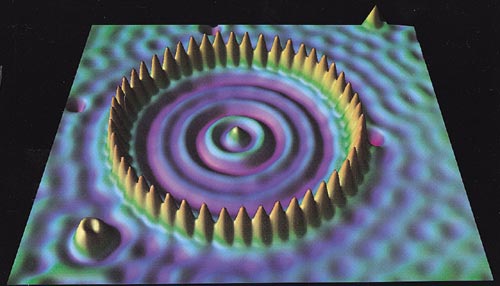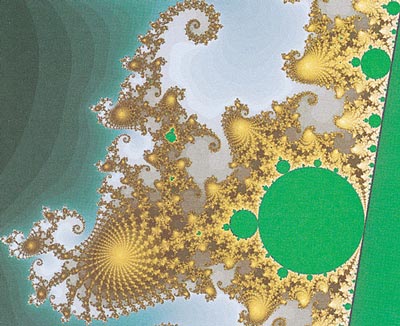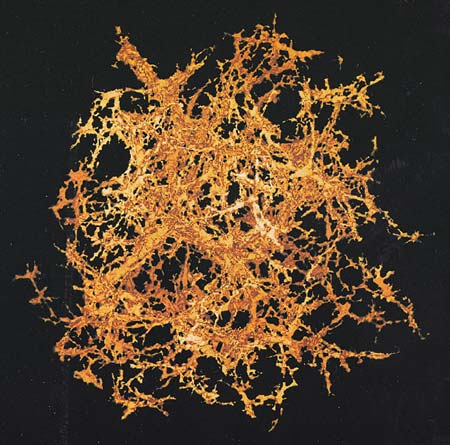
This Article From Issue
May-June 1999
Volume 87, Number 3
DOI: 10.1511/1999.24.0
With Physics in the 20th Century ($49.50), publisher Harry N. Abrams has finally done for Einstein, Bethe and Feynman what it did for Picasso, Pollock and Johns: turned their life's work into a fabulous art book. Author Curt Suplee's concise and jaunty tour of the great ideas and instruments of the past century necessarily plays second cyclotron to the glorious images, most of them made possible by perhaps the physical century's greatest legacy: the computer.

Above, 48 atoms dance on the surface of a copper crystal, as seen through a scanning tunneling microscope. Below, Benoit B. Mandelbrot's famous fractal set. Further below, a computer simulation of a piece of the universe. (All images from Physics in the 20th Century.)


American Scientist Comments and Discussion
To discuss our articles or comment on them, please share them and tag American Scientist on social media platforms. Here are links to our profiles on Twitter, Facebook, and LinkedIn.
If we re-share your post, we will moderate comments/discussion following our comments policy.